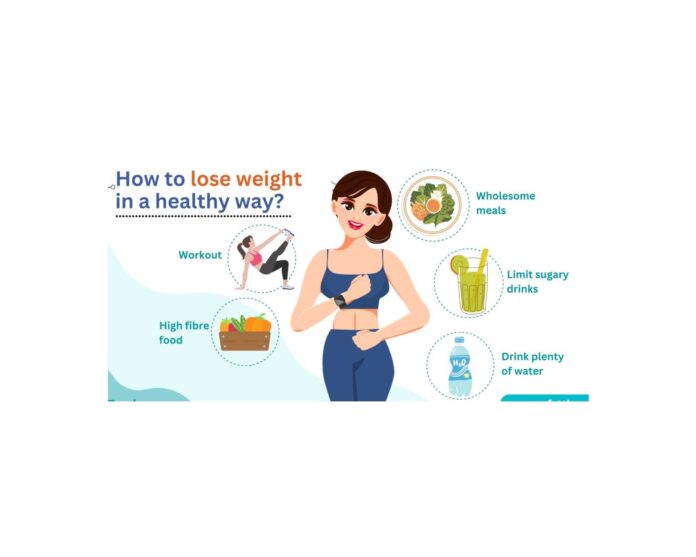The best and healthiest way to lose weight is by combining a balanced diet, regular physical activity, and sustainable lifestyle changes. Here’s a step-by-step guide:
1. Focus on a Balanced Diet
a. Whole Grains and Complex Carbohydrates
- Provide sustained energy and prevent blood sugar spikes.
- Examples: Brown rice, quinoa, oats, whole-grain bread, sweet potatoes.
b. High-Quality Protein
- Helps preserve muscle mass and keeps you feeling full.
- Examples: Eggs, chicken, fish, tofu, lentils, beans, low-fat dairy.
c. Hydration
- Drink plenty of water to support metabolism and curb unnecessary hunger. Aim for 8–10 glasses daily.
d. Healthy Fats
- Support hormone production and satiety.
- Examples: Avocado, nuts, seeds, olive oil, fatty fish.
e. Fruits and Vegetables
- High in fiber, low in calories, and packed with nutrients.
- Aim for a variety of colors to get a broad range of vitamins and antioxidants.
2. Create a Moderate Calorie Deficit
- Understand Calorie Needs: Calculate your Total Daily Energy Expenditure (TDEE) to determine how many calories you need to maintain your current weight.
- Reduce Calories Safely: Aim for a deficit of 500–750 calories/day, which typically results in a weight loss of 1–2 pounds (0.5–1 kg) per week. Extreme calorie deficits can be unhealthy and unsustainable.
3. Build Healthy Eating Habits
- Portion Control: Use smaller plates and pay attention to portion sizes.
- Meal Planning: Prepare meals in advance to avoid unhealthy choices.
- Limit Processed Foods: Reduce sugary snacks, fast food, and soda.
- Mindful Eating: Eat slowly, savor your food, and avoid distractions like TV or phone while eating.
4. Regular Physical Activity
a. Non-Exercise Activity Thermogenesis (NEAT)
- Increase daily movement by walking more, taking stairs, and standing instead of sitting when possible.
b. Strength Training
- Builds muscle, which boosts metabolism and helps burn more calories even at rest.
c. Cardio Exercise
- Increases calorie burn and improves heart health.
- Examples: Walking, jogging, cycling, swimming, or dancing.
5. Set Realistic Goals
- Focus on losing 1–2 pounds per week. Rapid weight loss can lead to muscle loss and is difficult to sustain.
- Celebrate small victories, such as improved energy levels or better-fitting clothes.
6. Prioritize Sleep and Stress Management
- Adequate Sleep: Aim for 7–9 hours of sleep per night. Sleep deprivation can disrupt hunger hormones, leading to overeating.
- Stress Reduction: Practice relaxation techniques like yoga, meditation, or deep breathing to avoid stress-related eating.
7. Monitor Your Progress
- Weigh Yourself Weekly: Avoid daily fluctuations and focus on long-term trends.
- Track Your Food and Exercise: Use apps like MyFitnessPal or a simple journal.
- Take Measurements: Track inches lost and how your clothes fit, as muscle gain may mask scale progress.
8. Be Consistent, Not Perfect
- Occasional indulgences are okay; what matters is consistency over time.
- Follow the 80/20 Rule: Eat healthily 80% of the time and allow 20% for flexibility.
Sample Day of Healthy Weight Loss
Breakfast:
- Scrambled eggs with spinach and a slice of whole-grain toast.
- A small piece of fruit (e.g., apple or orange).
Snack:
- Low-fat Greek yogurt with a handful of mixed nuts.
Lunch:
- Grilled chicken or tofu with quinoa and a side of roasted vegetables.
Snack:
- Sliced veggies with hummus.
Dinner:
- Baked salmon or chickpeas with steamed broccoli and sweet potato.
Hydration:
- Herbal tea or water infused with lemon and mint.
For more information about weight lose click here.





